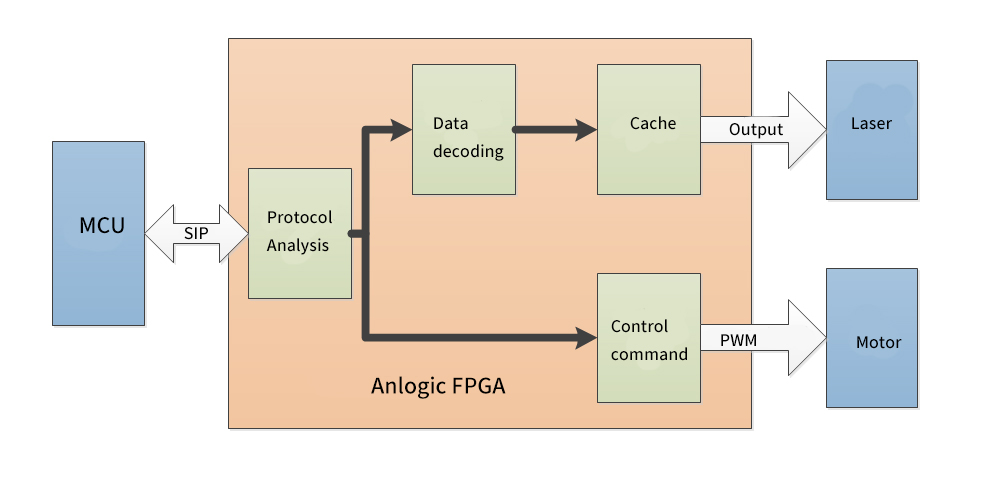laser printer-凯发官网入口
i. background
laser printers need to convert the image information from the computer into a laser drive signal and drive the motor rotor to scan and print the original image. to reduce transmission bandwidth, the computer compresses and encodes the original image into a binary image, which is then transmitted to the printer’s master chip over the lan. the printer system needs to decode the binary image, restore it to the original data, and then output the pixel dots in the order of rows and columns.
ii. solution description
the block diagram of the fpga-based laser printer system is shown below. mcu receives the compressed image data sent by the computer and packages it into an spi custom protocol to send to the fpga as the master chip. fpga needs to parse the protocol and convert it into corresponding control commands and image data, and the control commands are mainly used for motor speed control. the fpga can convert the control commands into pwm waves of different frequencies to drive the motor to the specified speed; the image data parsed by the fpga needs to be reduced to binary images by data decoding, cached and output to the laser in the specified timing sequence and printed with the motor.

recommended for development kit
solution advantages
-
highly efficient decoding algorithm
fpga-based decoding algorithms can be parallelized and pipelined to improve the efficiency of decoding algorithms, and rich logic resources allow for adaptation to different iterative upgrades of decoding algorithms
-
adaptable to a wide range of interfaces
configurable ios for fpga, allowing users to implement a variety of peripheral protocols to adapt to different laser models



